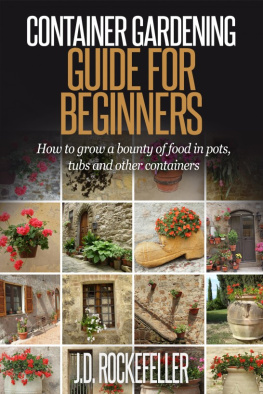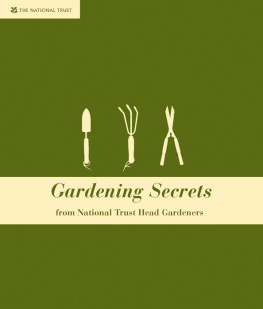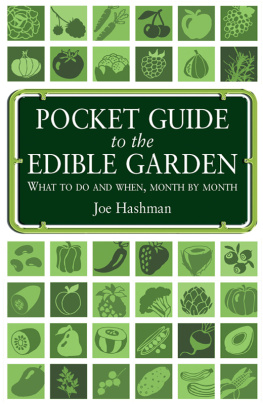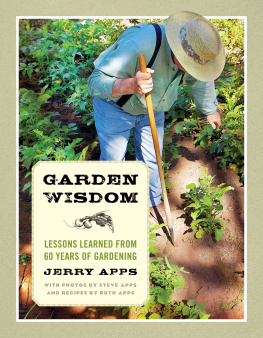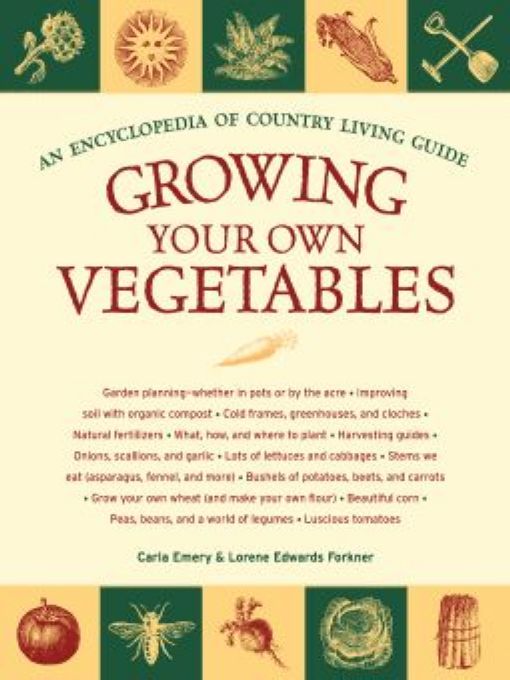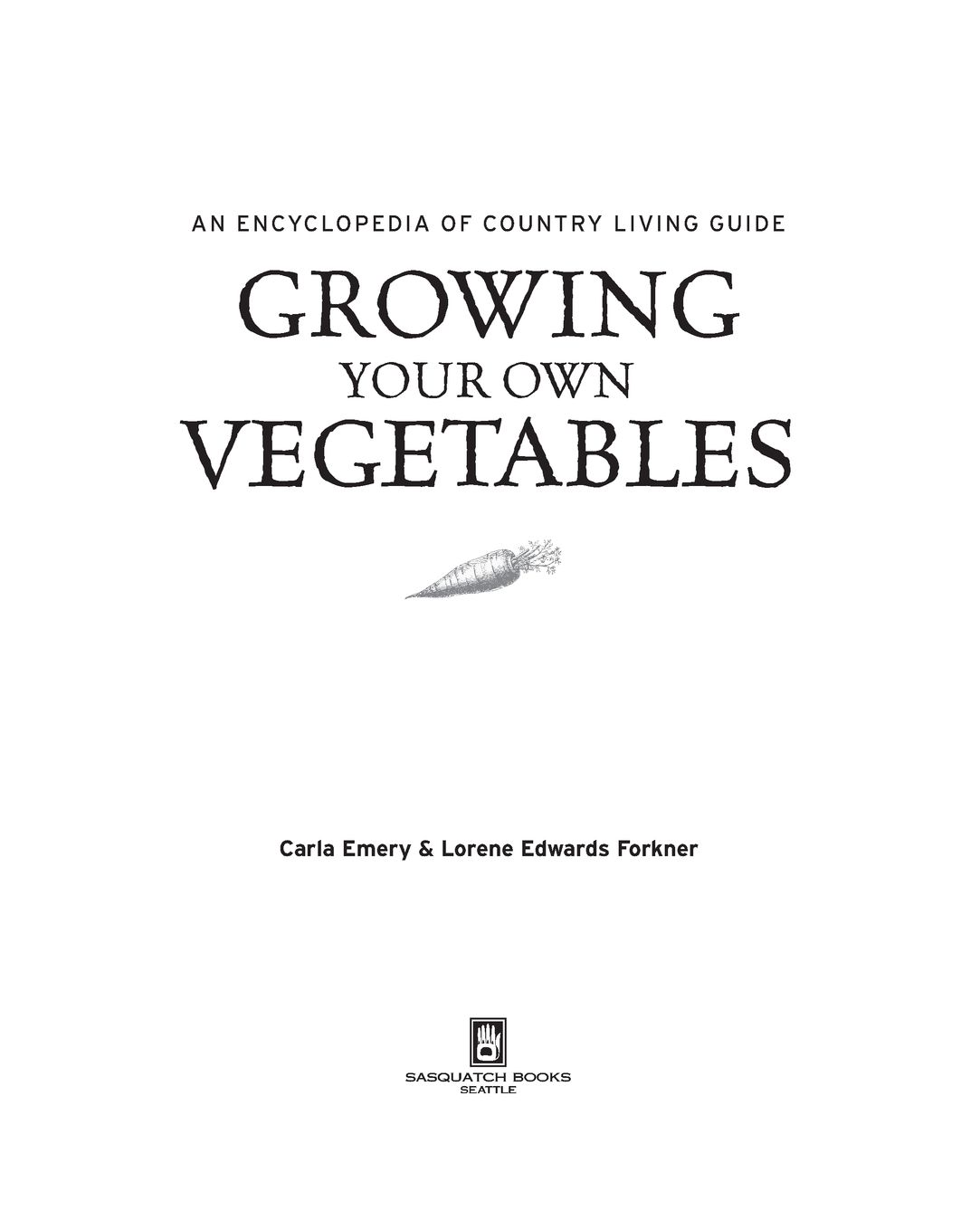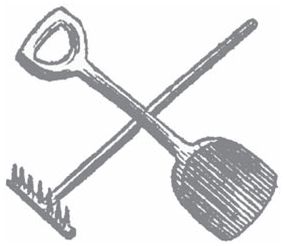Table of Contents
For Mom and Dad, who allowed me to dig up our backyard, plant corn, and walk away. The weeds grew tall, but the seed for my love of gardening was sown. I cant remember if we got any corn.
LEF
INTRODUCTION
Carla Emery first began to pen what was to become The Encyclopedia of Country Living in 1970 while working a small farm in Idaho and parenting the first of her seven children. All around her people were going back to the land, trading city life for country living. Their desire for self-sufficiency vied with a nagging fear of nuclear annihilation, and they were filled with urgent questions as to how to proceed in their new rural world. Over the years, what had begun as serial chapter installments, produced by hand and mailed to people who responded to an advertisement for an Old Fashioned Recipe Book in Organic Gardening magazine, grew to become a definitive work on country living and modern homesteading. Now in its tenth edition, thirty-five years after the first complete book was collated (by hand) in a rural library in Idaho, The Encyclopedia of Country Living remains a living history and comprehensive resource for living off the land and doing it yourself.
My journey through its nine-hundred-and-some-odd pages, along with my research and ruminations as to who Carla was, reveals her to have been a remarkable, feisty woman who above all cared for her family and for cultivating a good and healthy life in an independent manner. She was passionately committed to providing wholesome food produced in an environmentally sensitive way and living in concert with the land and the seasons. Although she may have farmed her many acres in a lifestyle more in keeping with the early twentieth century, in many ways she was not so very different from todays concerned twenty-first-century world citizen looking for good, clean food sustainably produced in a way that supports fair living conditions and a safe environment.
From asparagus to zucchini, this book is largely in Carlas voice and, I hope, communicates her passion, her quirks, and above all her encyclopedic knowledge of living a resourceful, respectful, and responsible country life. What follows is not merely a comprehensive list of vegetables suitable for backyard cultivation, but also the knowledge and details from the ground up to successfully grow your own food. In her inimitable exhaustive wayalways categorizing, listing, and enumeratingCarla offers up many choices, alternatives, and optionsspinach or chard, draft horse or tiller.
Todays markets are treasure stores stocked with shrink-wrapped, waxed, stacked, and labeled produce shipped from New Zealand, Chile, Mexico, and other distant fields. The fluorescent-lit aisles of these trade giants are a Neverland where one can have summer in the depths of winter, seduced by giant shiny red strawberries in December, and convenient prewashed, carved, and packaged baby vegetables. Indisputably, a diet rich in colorful and nutritious vegetables throughout the year is a boon to our health. But look beyond self-interest to examine the industrial complex necessary to support todays megamarts, and youll find a seamy underbelly fraught with pollution, waste, and human rights abuse. Routine recalls and health warnings remind us that even fresh farmed food is not without health perils.
The cottony disappointment of deceptively red strawberries in winter, sticker shock at the checkout stand, and a desire for wholesome, healthy food has many of us looking for another way. We have choices. Carla would say we are blessed with choices. Many towns and cities now regularly support seasonal farmers markets, community gardens provide growing space for those without access to land, and lucky is the person who has generous neighbors with an abundant harvest. There is a dawning movement toward procuring local foods that follow the rhythm of the seasonsthat is, the seasons of the hemisphere in which we resideand, for those of us looking to participate in a practice nearly as old as the human race, even in our own immediate zip code.
Passionate gardeners, avid cooks, enthusiastic eaterswere all after the same thing, whether we work a remote farm in the heartland, reside in small towns or suburban developments, or are homesteaders of the last urban frontier, making our home in the citys industrial spaces and dense downtown environments. Our gardens may be measured in acres, patches, backyard plots, community lots, or containers on a fire escape, rooftop, or shyly proportioned balcony. You dont need an acre, a backyard, a garden, or even your own container of dirt to eat good healthy fresh vegetables. But for those of us willing to brave the weather; dance an evasive tango with pests and disease; kneel in the dirt; sport definitely non-fashion-forward tan lines, while shading our heads against the midday sun; or support friends, neighbors, and small farmers who do, the table is set for a feast that feeds both body and mind, belly and spirit, at once economically sound and emotionally satisfying. Discovery and wonder, as well as the occasional disappointment and frustration, await us in each new season in a constantly revolving and delicious trip around the sun.
Lorene Edwards Forkner
April 2009
PART ONE
CREATE A GARDEN
PLANNING YOUR GARDEN
Whether you have an acre in the country, a corner of a suburban backyard, a plot in a community garden, or several containers on the patio or fire escape, if you really want to have a garden, you can! Gardening is fun, educational, profitableand popular for those very good reasons. For every dollar you spend on your garden youll get back many times that in delicious, healthy, organic food. Its a good investment of your time too. In addition to the value of your produce, gardening is good for you, body and soulworking your muscles, exercising your brain, and reconnecting you to the vital process of raising nourishing food. With advance planning and by properly locating your garden for the best results, youll reap generous rewards and a healthy harvest.
AVAILABLE SUNLIGHT AND WATER
Select a potential garden space that receives at least six hours of direct sun a day; although some plants will flourish in partial shade, most need a generous dose of sun. Some gardens may be limited by their water supply or by how far a water source can reach. Plants can absorb food from the soil only if it is in solutionin effect, plants must be damp to grow. Unless you live in an area with dependable, abundant spring-to-fall rains, dont plan to garden vegetables beyond the reach of your irrigation system.
Most vegetables are about 85 to 90 percent water and require generous and faithful watering throughout the season. The best time to water is in the morning. Plants do most of their growing during the day and need water for photosynthesis. Watering in the morning also allows plants to dry out by evening, which reduces the chance of mildew and rot. Almost all vegetables produce better with abundant water; once stunted by drought, many vegetables will not recover. Count on providing about an inch of water a week from nature or your irrigation system. Hook up your water system or drag a hose out into your proposed garden space to verify its range and confirm that you have both water and sunshine!


![Dowding - The Year-Round Vegetable Gardener’s Bible [7 Books in 1]](/uploads/posts/book/453239/thumbs/dowding-the-year-round-vegetable-gardener-s.jpg)
